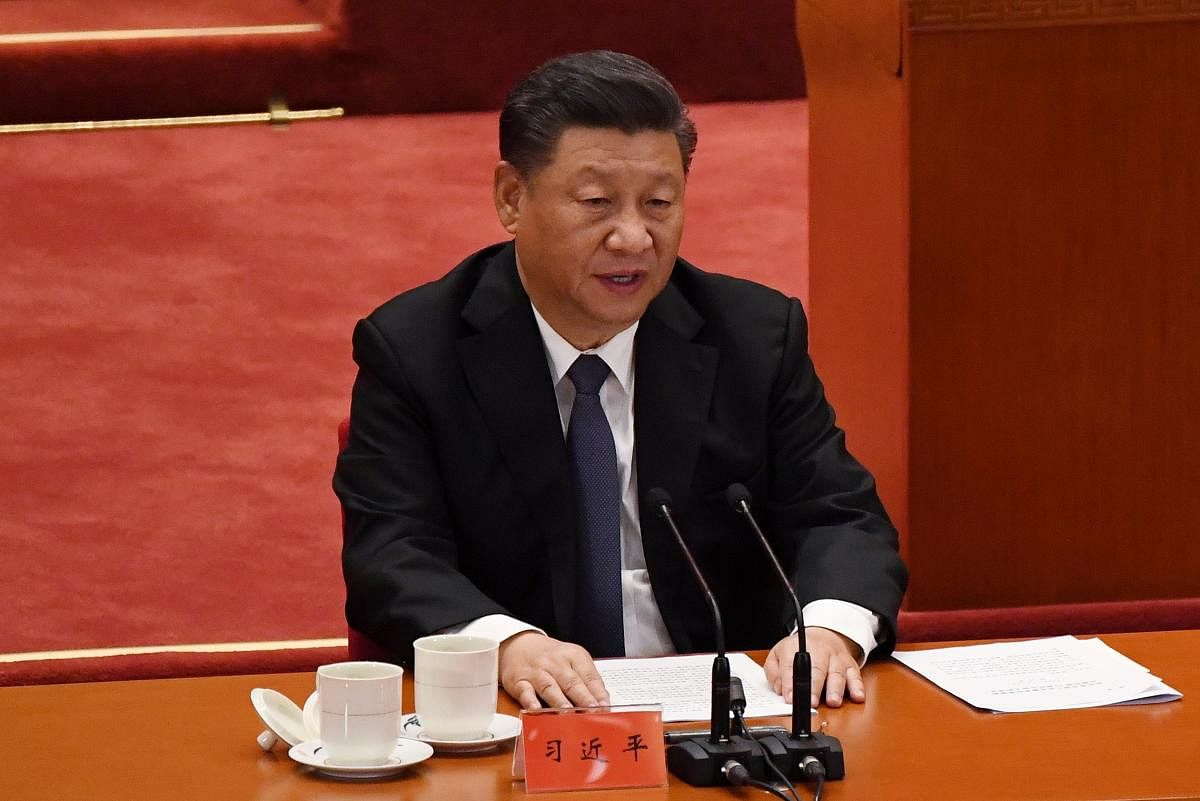
The recent trends in Chinese aggrandisement policies have seen the resurgence of the ‘grossraum’ (great space) debate. History has been witness to the Chinese occupation of Tibet in 1950, its salami tactics in the slicing of Aksai Chin and the developments leading to the 1962 Sino-Indian border war.
This was followed by the disastrous Chinese invasion of Vietnam in 1975, its occupation of Johnson Reef in 1988, Mischief Reef in 1995, Scarborough Shoal in 2012, transformation of the geopolitical map in the South China Sea and Beijing’s more recent aggressive postures in Doklam, Naku La, Pangong Lake, Galwan River Valley and Hot Springs. China’s state media has even been churning out stories that the Pamir Mountains in Tajikistan and Mount Everest on the India-Nepal border belong to China.
With the end of the cold war, scholars began to speak of the demise of the days of forceful occupation. However, the US-led invasion of Iraq in 2003 opened out a new chapter. Russia’s moves in Georgia’s Ossetia and Abkhazia regions in 2008 which was a case of land grab. This was followed by the developments in Eastern Ukraine and the occupation of the Crimean. It is in this context that the concept of territorial aggrandisement calls for a deeper analysis.
Carl Schmitt, a conservative revolutionary, had extended the Grossraum theory in the 1930s and 1940s and his name got linked to Hitler’s expansionist policies. In 1928, the year the Kellogg-Briand Pact was signed, Schmitt began to ponder over the discrepancies between the illegality of war and the continued validity of military occupation.
Though Schmitt distanced himself from the Nazi justification and theories, his doctrine tended to provide a politico-judicial justification for re-territorialisation, especially that of the Third Reich. The issue is how an ‘empty space’ is re-territorialised. Schmitt’s originality lay in how he translated these ideas/concepts into international law.
Pakistan Prime Minister Imran Khan’s wild imagination of coming out with a new political map has been rightly dismissed by the Indian government as Pakistan’s absurdity and obsession with territorial aggrandisement. The map shows the Union Territories of Ladakh, and Jammu and Kashmir as well as Sir Creek and Junagadh as being part of Pakistan. The map was released on the occasion of the first anniversary of the abrogation of Article 370. Pakistan, China and Turkey now seem to be hand-in-glove on J&K. India has objected to all the three interfering in what are clearly India’s internal matters.
India has had to contend with China’s land grab across its borders. China seems to be exploiting the pandemic to double-down on its illegitimate claims. India faces a dilemma as a result of the Chinese belligerence and cancerous expansion of its territorial outposts. Beijing has been continuously eating into India’s Himalayan borderlands.
An Intelligence Bureau official argues that India has lost almost 2,000 sq kms of land to the Chinese in the last decade alone. China has had to stand cover for the People’s Liberation Army (PLA). Strategic expert Brahma Chellaney terms this as China’s “cabbage approach” to borders. This approach helps Chinese to cut off access to an adversary’s previously controlled territories and gradually surrounds it with civilian and security layers.
Attention needs to be paid also to China’s territorial aggrandisement - in the South China Sea, through physical occupation of land, Beijing is laying out a demarcation line. Some writers refer to it as a ‘maritime insurgency’ and an ‘attacking octopus’. The Chinese have put into place 3,000 m runways, naval berths, hangars, ammunition bunkers, missile silos and radar sites.
Beijing’s belligerent and revisionist attitude, as well as its pretensions to indisputable sovereignty over the Spratly and Paracel islands, is in violation of the UN Convention on the Law of the Sea (UNCLOS) and the Permanent Court of Arbitration’s ruling in the Philippines v China case. The Philippines have a strong case in legally contending that the artificial islands cannot be considered as ‘naturally created’ islands.
Land reclamation
Moreover, Manila wants the ‘nine-dash line’ to be invalidated. Beijing’s land reclamation commenced after the ‘critical date’ - the time when the dispute crystallised between Manila and Beijing. Beijing’s attitude constitutes a challenge to the UNCLOS regime.
Even the US is finding it difficult to handle China’s belligerent attitude, given its continental conception of sovereignty. US Secretary of State Mike Pompeo termed China’s ‘great wall of sand’ claims as unlawful. The issue is ridden with a variety of legal and strategic implications.
Washington deployed two US Navy guided-missile destroyers to the Paracel and Spratly islands to conduct freedom of navigation operations. Even two aircraft strike groups were deployed for joint operations in the region. All these are meant to demonstrate US’ resolve to protect the freedom of the seas for the US Navy to operate. India has also argued that the South China Sea is part of the global waterways.
Japan also finds itself at the receiving end over the Senkaaku islands. China opines that the nationalisation of these islands by Japan is a “challenge to the post-war order”.
The UN Economic Commission for Asia and the Far East came out with a report in 1969 which indicated the possibility of huge oil reserves in the seabed north of Taiwan. From then on, Beijing argues that the islets are part of the province of Taiwan and hence a part of China. Japan seeks a solution to the problem based on law, justice and diplomatic decency.
The Chinese seem to have adopted a policy of territorial aggrandisement. By doing so it raises the risk of a conflict in the Indo-pacific region. The opacity of China’s decision-making system further aggravates the situation. The Chinese leadership has mastered the art of executing diplomatic and military aggression for the sake of territorial aggrandisement. For the Chinese, territorial aggrandisement seems to be an indulgence thereby keeping the tenets of ‘grossraum’ alive and kicking.
(The writer is former Dean, Faculty of Arts, Bangalore University)